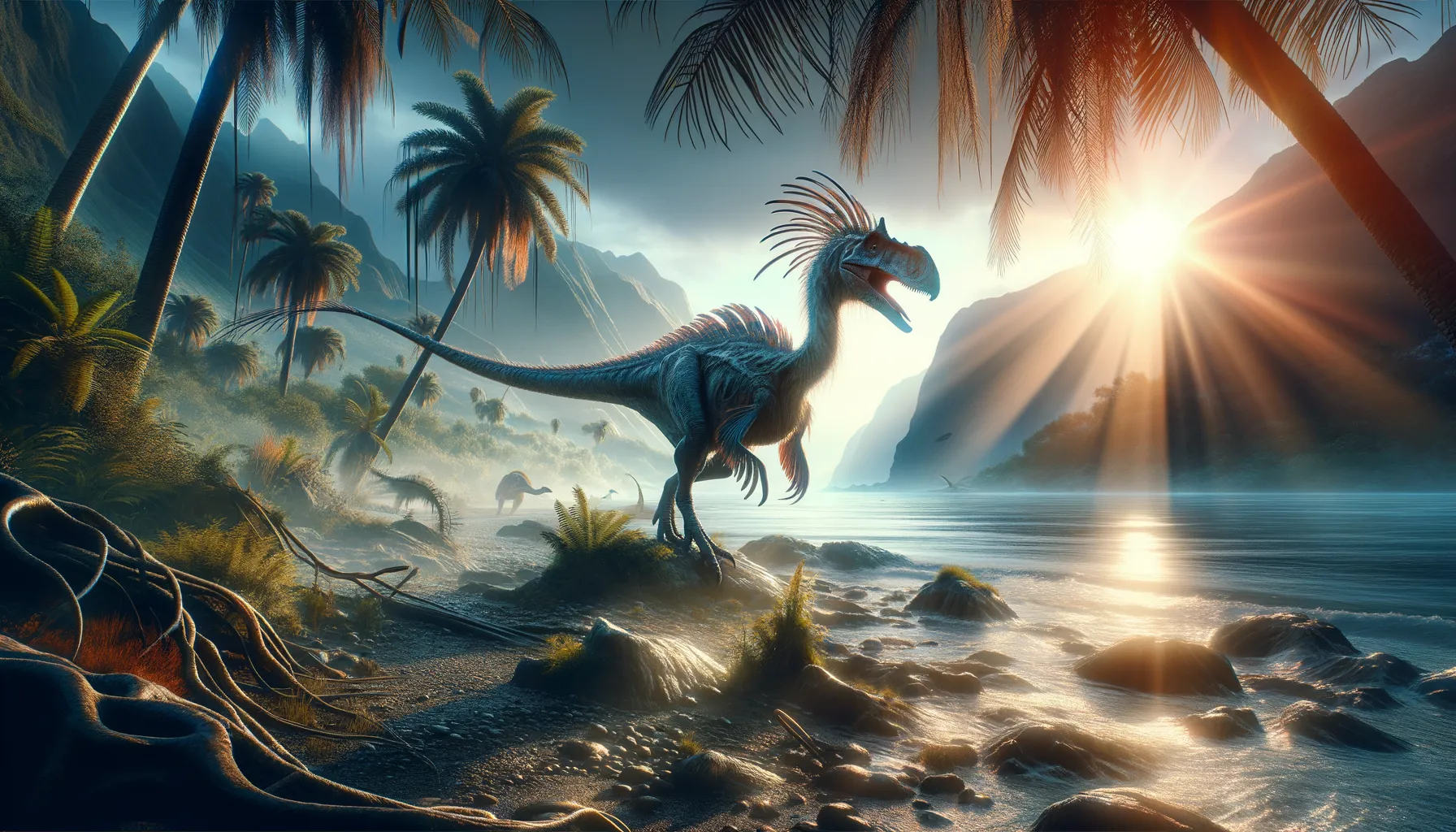
Haplocheirus
Unveiling the bird-like secrets of evolution.
Period
Jurassic
Length
Measured around 2 meters from head to tail.
Height
Roughly 1 meter tall at the hip.
Weight
Estimated around 50 kilograms.
Haplocheirus is an intriguing theropod dinosaur known for its place in the evolution towards modern birds. Living during the Late Jurassic period, this creature had a unique blend of primitive and advanced features that shed light on theropod diversification. Its discovery has provided insights into the development of bird-like characteristics such as feathers and skeletal adaptations, playing a crucial role in understanding avian evolution.
Diet
As a carnivore, Haplocheirus likely fed on small reptiles, mammals, and possibly insects. Its agile form suggests it was an adept hunter, capable of capturing quick-moving prey with precision.
Hunting
Haplocheirus' hunting strategy was likely based on ambush and quick bursts of speed, taking advantage of its relatively small size to maneuver through dense vegetation. Its forelimbs were adapted to snatch prey, suggesting refined dexterity and grip.
Environmental challenges
Living in a varied habitat, Haplocheirus faced both seasonal weather fluctuations and competition for food resources. The ability to adapt to changing environments was crucial for its survival. Its evolution towards a more bird-like form might have been a response to these ecological pressures, enabling it to exploit new niches. Predation pressure from larger theropods would also demand vigilance and effective escape strategies.
Speed
Likely moderate, capable of agile movements.
Lifespan
Approximately 15 to 25 years.
First discovery
Discovered in 2004 in the Gobi Desert, China.
Fun Facts
- Haplocheirus means 'simple hand,' named for its unique hand structure with a large claw on its first finger.
- This dinosaur lived around 160 million years ago during the Late Jurassic period in what is now China.
- Haplocheirus is considered an early ancestor of birds, showing that bird-like traits were already evolving in theropods at this time.
- Unlike many of its theropod cousins, Haplocheirus was relatively small, measuring about 2 meters in length.
- It had long, powerful legs that suggest it was a fast runner, possibly using its speed to catch prey or escape predators.
- Haplocheirus is part of the Alvarezsauridae family, which includes other small, fast-running dinosaurs with bird-like features.
- The discovery of Haplocheirus helped fill an important gap in the understanding of how theropods evolved into birds.
Growth and Development
Haplocheirus likely underwent rapid growth during its juvenile stages to quickly reach a size that reduced predation risk. Its growth strategy would have balanced speed with energy conservation, providing enough reserves to sustain agile movements. Developmental adaptations might have included changes in body structure facilitating enhanced mobility.
Habitat
This dinosaur inhabited environments ranging from open floodplains to forested areas, where it could utilize its agility to evade predators and hunt. The habitat was rich with vegetative cover, offering plenty of hiding spots and hunting grounds. Seasonal water sources would have been crucial for survival, and this dinosaur might have migrated to follow these resources.
Interaction with other species
Haplocheirus interacted with a variety of organisms, competing with other small theropods and mammals for food. It may have had symbiotic relationships with certain plant species, where its actions like digging could have benefited seed dispersal. Due to overlapping habitat ranges, harmonious living with herbivorous species was possible.
Natural lifespan
In the wild, individuals likely lived up to 25 years.
Reproduction
Reproduction in Haplocheirus was likely oviparous, with females laying eggs in well-hidden nests. There could have been some level of parental care involved in guarding the nest. Eggs would have hatched into precocial young, capable of moving and acting on their own shortly after birth.
Social behaviour
Haplocheirus might have been solitary or formed small, loosely structured groups. The advancement of bird-like features suggests potential for complex communication, possibly through vocalizations or visual displays. Its lifestyle would have necessitated occasional interactions for mating and territory establishment.
Fossil locations
The primary fossil evidence for Haplocheirus comes from the Shishugou Formation in the Gobi Desert, which has provided crucial insights into its anatomy and ecology. The relatively complete nature of the fossils uncovered allowed scientists to reconstruct its evolutionary context within theropods. This location is part of a rich tapestry of Jurassic life, shared with many other dinosaur species.
